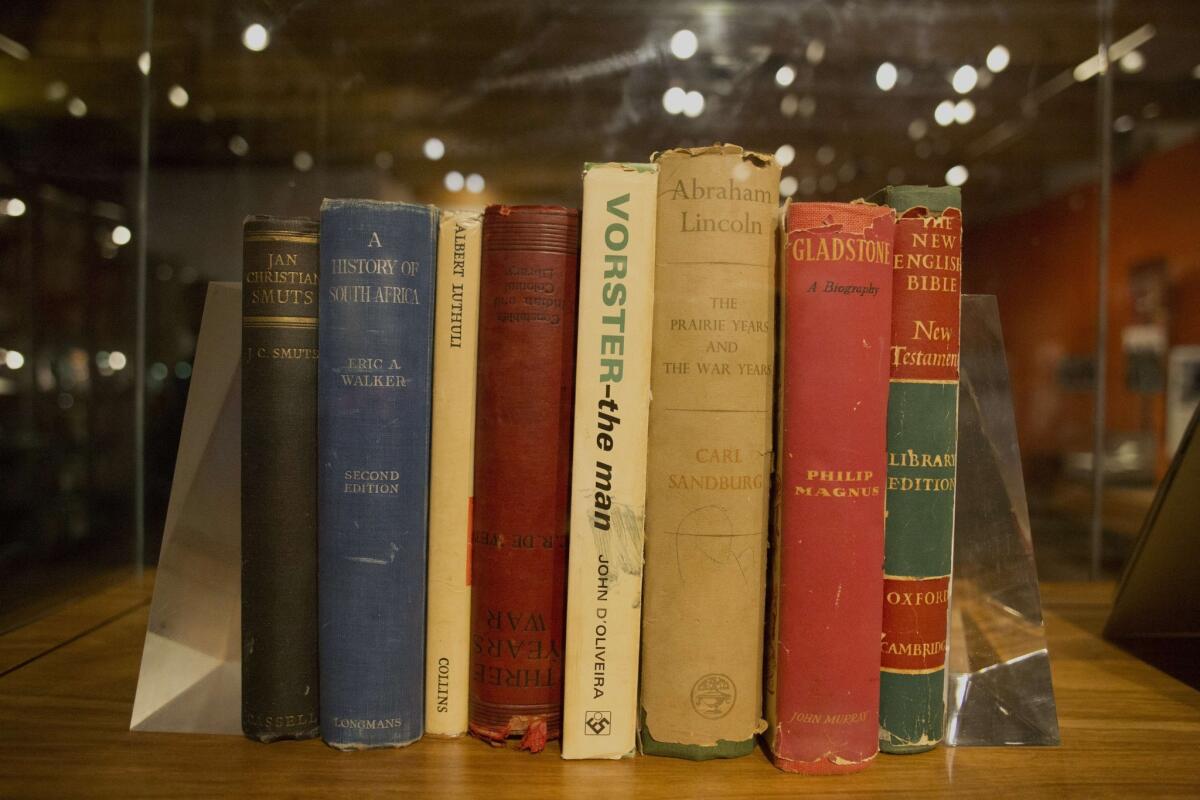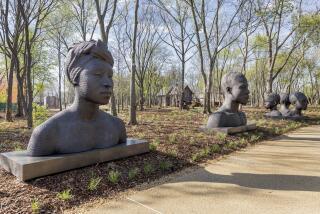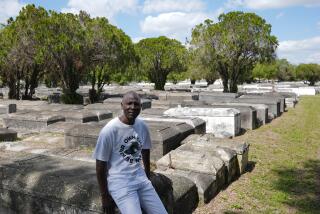In new Mandela center, fragments from the past tell his story

JOHANNESBURG, South Africa - Inside the Nelson Mandela Center of Memory, opened Monday by President Jacob Zuma, a small fragment of compacted mud is all that remains of the hut where Nelson Mandela was born in Mvezo village in the Eastern Cape 95 years ago.
It was rescued about four years ago, after Mandela’s grandson, Mandla Mandela, chief of Mvezo, had the original hut where Mandela was born torn down. In place of the humble, battered dwelling, he built a brand new replica, of no historic interest, critics say.
The Nelson Mandela Center of Memory, where the remains of the original hut now reside, is designed to create a living reminder of the legacy of South Africa’s first black president, but on Mandela’s instruction is not supposed to be a museum. Yet the permanent exhibition will likely become one of the touchstones for visitors wishing to get a sense of the man.
It offers the opportunity to stand in his silent office, with its smell of leather chairs and plush rugs. On his desk is a portrait of his wife and on the wall are photographs of his two sons as children, both now dead. There’s a collection of china bulls and on the bookshelves behind his chair, a glass lion, a boxing glove and an English policeman’s helmet.
Officials from the center were diplomatic Monday about his grandson’s decision to destroy Mandela’s first dwelling, set above the place where his umbilical cord was buried, in accordance with tradition.
“We would like for the original hut to have remained,” was all that senior archivist Razia Saleh said, adding that Mandela’s grandson wanted to modernize the area. She said the center’s staff debated whether to display the fragment of his hut and decided in favor because so little remained to convey Mandela’s early rural life.
“There were no photographs. There was no birth certificate. It’s one of the few things that are tangible that link us to Mandela’s early life,” she said.
The fragment of the hut is one of a few original objects on display in the Nelson Mandela Center with a direct connection to the man himself. There are also several letters, his presidential briefcase, his Sunday school membership card and official documents related to his trials.
The Nelson Mandela Center of Memory, created by the Nelson Mandela Foundation at his request, is just around the corner from Mandela’s home in the Johannesburg suburb of Houghton, where his bedroom is now set up like an intensive care unit, according to former wife Winnie Madikizela-Mandela, in a weekend interview with local media.
She said Mandela was still “quite ill” and had lost his voice due to tubes in his throat to clear fluid from his lungs. He communicated with his family using facial expressions, she said. He was getting 24-hour treatment from a team of 22 doctors, she added.
“He communicates with the face, you see. But the doctors have told us they hope to recover his voice. It is difficult for him,” she said. “He remains very sensitive to any germs so he has to be kept literally sterile.”
Mandela was hospitalized with pneumonia in June, and at one point appeared near death, sparking a bitter legal fight between members of Mandela’s family over where the family bones should be buried, a fight that also determined where Mandela will be buried.
Zuma visited Mandela on Monday morning and later reported the former president was responding to treatment but remained in critical but stable condition.
The Nelson Mandela Center of Memory sees its role as intervening in intractable political disputes, for example election disputes, and hosting meetings or “dialogues.” It also houses the archive of Mandela’s writings, including his unfinished autobiography, “The Presidential Years,” about his time as South African president.
The center will not be open to the walk-in members of the general public and officials appear squeamish about the possibility of tour buses. Bookings will be required and even before it opened the center was already booked until the end of the year. The archive will be open only to people granted special access by the foundation, for example, researchers.
The center contains a glass room the same size and dimensions of Mandela’s cell on Robben Island, where he spent the bulk of his 27 years’ imprisonment. There are several books like those that he kept on his shelves along with photographs of his then-wife Winnie.
Saleh said the hardest part about creating the exhibition was deciding what to leave out. A rugby jersey given to him by the captain of the national team was not included. And many letters had to be excluded.
Nelson Mandela has become such a giant figure in the global imagination, revered for his role in freeing South African blacks from apartheid, that any item associated with him has almost iconic status.
There is enormous interest in key items linked with Mandela that have never been found: his Ethiopian passport, confiscated by apartheid authorities after his arrest, and the famous pistol he was given during his military training in Ethiopia. Contradictory stories about the whereabouts of the gun abound. One has it buried at the back of a former farmhouse used by the ANC’s underground military wing.
However, Saleh said Mandela remembered having the pistol with him when he was arrested.
“Fortunately we don’t have a gun obsession, at least not now,” said the center’s chief executive, Sello Hatang.
Saleh, who has spent a great deal of time reading Mandela’s neat handwriting -- a product of his mission school upbringing -- said there were small mysteries that even he couldn’t unravel. Sometimes a word or two would be illegible.
And throughout his diaries and other notes, the letters K.L.M. often appeared. “Madiba has not been able to tell us what K.L.M. means,” she said, using Mandela’s clan name. “We can’t figure it out.”
The archive contains letters from his years on Robben Island, conveying a desperately lonely feeling.
“I think that must have been his darkest period. A lot of those letters are quite sad. He missed his wife, he missed his family. He wasn’t able to attend the funeral of his oldest son.
“But even though they are sad, the letters are full of hope,” said Saleh. “He never wavered. He never regretted the path he took.”
ALSO:
Mexico: Family of eight stabbed to death in Juarez
French president arrives in Israel; Iran high on agenda
Video shot in Philippines displays the power of Typhoon Haiyan
Twitter: @latimesdixonrobyn.dixon@latimes.com
More to Read
Start your day right
Sign up for Essential California for news, features and recommendations from the L.A. Times and beyond in your inbox six days a week.
You may occasionally receive promotional content from the Los Angeles Times.






